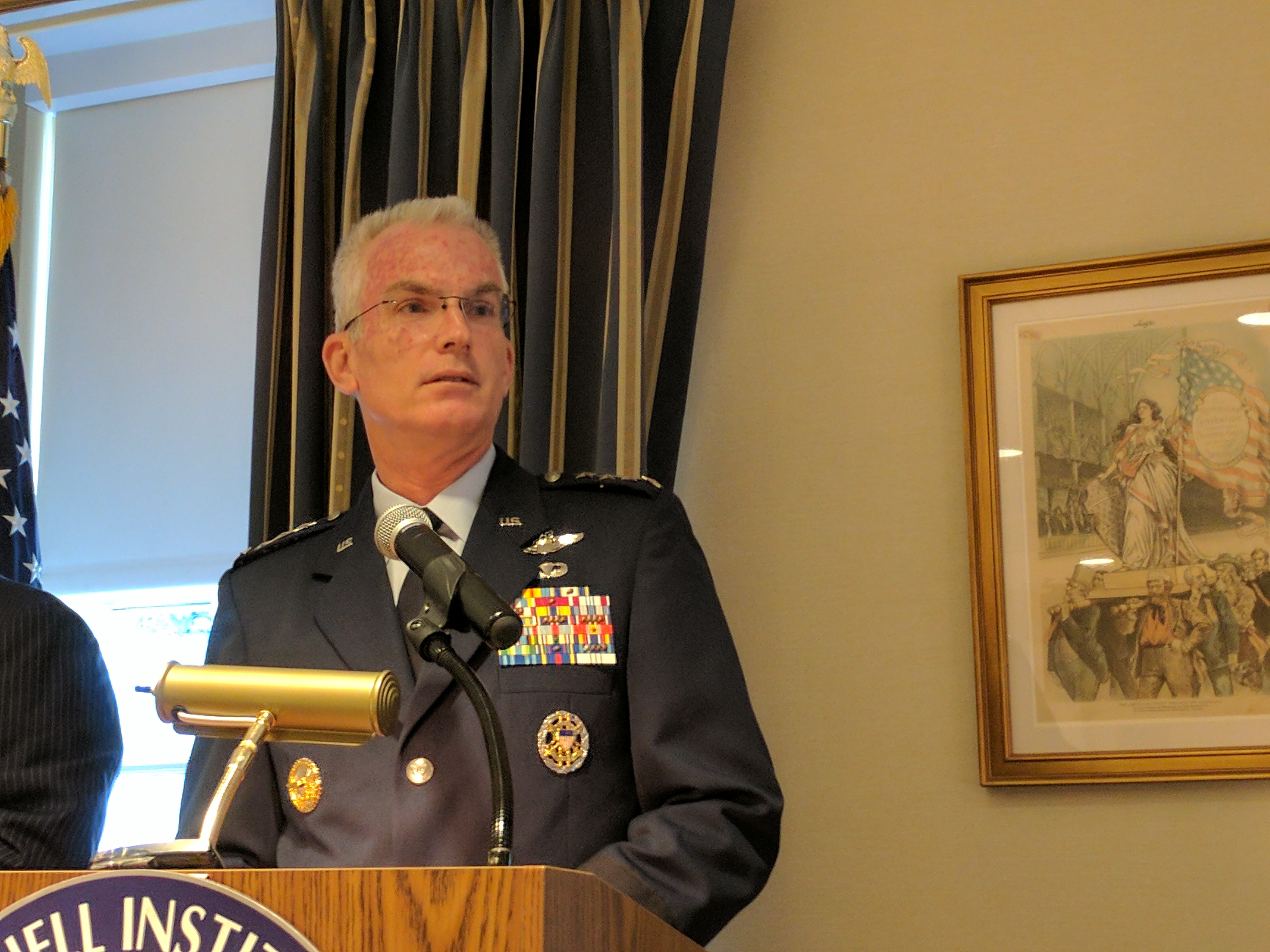
Vice Chairman of the Joint Chiefs of Staff Gen. Paul Selva, speaking Thursday at an AFA Mitchell Institute event on Capitol Hill, said a nuclear posture review has never projected threats beyond a sitting administration until now. Staff photo by Gideon Grudo.
Nuclear deterrence is the Defense Department’s “most important mission,” according to the US military’s second highest-ranking officer.
Speaking on Capitol Hill Thursday morning, Vice Chairman of the Joint Chiefs of Staff USAF Gen. Paul Selva outlined the military’s capabilities, challenges, and concerns as it moves forward with its nuclear deterrence enterprise. Many of these are being studied in conjunction with and as part of the nuclear posture review (NPR) and the ballistic missile defense review (BMDR), which President Donald Trump ordered earlier this year, and which Selva is leading.
Selva said the department is taking a “unique” approach to the NPR, noting it will be “tailored” to the requirements of current and emerging 21st century threats and look out over 20 years into the future.
“This will be the first time that we have projected the threat out beyond the current administration and provided advice to a sitting President on how we should tailor our nuclear enterprise and our ballistic missile defense enterprise to ensure the defense of the nation,” Selva said at the talk, hosted by the AFA Mitchell Institute. From radical approaches to conservative ones, the recommendations to the President will leave “everything on the table.”
There are other significant milestones to consider, leaving the military in uncharted waters, Selva added.
“This is only our second ballistic missile defense review,” he said. “It’s only our fourth nuclear posture review. It’s the first time in the history of either that the threat actually got worse in the intervening years between the last review and the current.”
Unlike it did in its first NPR—conducted in 1994—and in all other BMDRs, this time the military “can’t afford” to assume that over the life of the reviews, and their coinciding actions, existing threats would diminish, Selva said.
In claiming the nuclear mission is DOD’s most important, Selva argued three points. For one, Selva said nuclear weapons pose “the only existential threat” to the US and its allies, saying there’s “no substitute for a devastating nuclear response to deter that threat.” Second, the country’s nuclear triad “complicates the adversary’s preemptive strike calculus and it allows us to hedge against both internal and external uncertainties.” Third, Selva said, deterrence, assurance, and escalation control are what allow “the nuclear enterprise to support our national US military objectives.”
“If you don’t believe one or all of those three propositions,” Selva said, “Sleep is a valid form of criticism.”
The reviews will take into account four specific nation-states that pose or are expected to pose a threat to the US: Russia, China, North Korea, and Iran. Despite these threats, Selva said the military is “not on a quest to have a Cold War-style arms race with any opponent,” but on a path to replace the structure that exists within today’s nuclear enterprise with “new equipment.” He shies away from using the term modernization, arguing “replacement” is more accurate and is a “consequence” of a “more modern” enterprise.
“It won’t be cheap. Today we spend about 3.5 percent of the defense budget on the ownership and maintenance of our existing nuclear force,” Selva said, adding that “given the current set of budget constraints,” that number will rise to “just over six percent.”
Nothing changes the fact that, “While we’re buying new, we must maintain old,” he said.